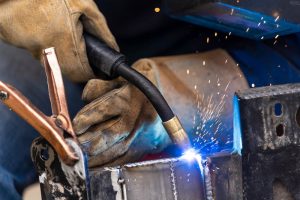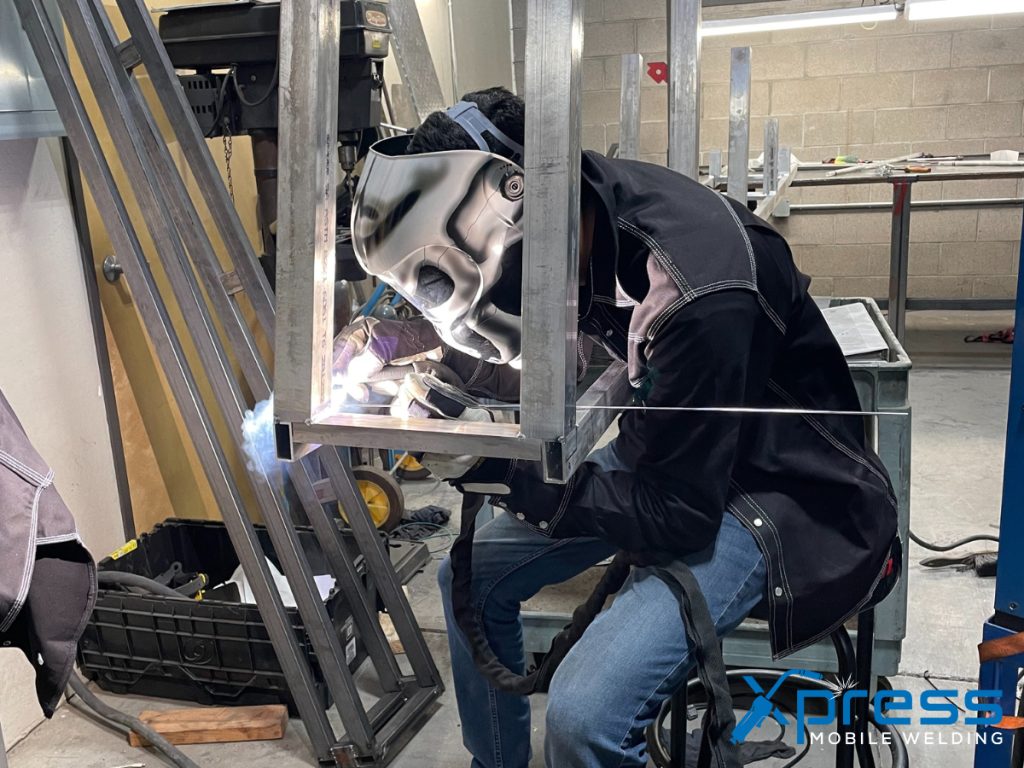Mig welding is a type of welding that uses a wire electrode to create the weld. The mig stands for metal inert gas, which is the process of using an inert gas like argon to protect the weld from contamination. Mig welding is one of the most popular types of welding because it’s easy to learn and produces high-quality welds. Mig welding is one of the most popular types of welding. But do you know what mig stands for? Mig stands for Metal Inert Gas, which is a type of welding that uses a gas shield to protect the weld from contaminants. Mig welding is often used because it’s a relatively easy process to learn and produces strong welds.
What is MIG welding and what are the benefits of using it compared to other welding methods?
 MIG welding is typically used for joining thicker pieces of metal, such as steel or stainless steel. MIG welding is faster than other methods of welding, such as stick welding, and produces less heat, which minimizes the risk of warping the metal. MIG welding is also easier to learn than other methods, making it a good option for beginners.
MIG welding is typically used for joining thicker pieces of metal, such as steel or stainless steel. MIG welding is faster than other methods of welding, such as stick welding, and produces less heat, which minimizes the risk of warping the metal. MIG welding is also easier to learn than other methods, making it a good option for beginners.
In addition, MIG welding is generally faster than other welding methods, making it a more efficient option for many applications. While MIG welding does have some advantages over other welding methods, it is important to note that MIG welding is not suitable for all applications. MIG welders are also more expensive than other types of welders, so it is important to consider the cost before deciding which type of welder to use.
MIG welding is a popular welding method that offers several advantages over other methods. One key benefit is that MIG welding is relatively easy to learn. This makes it a great option for welding beginners or those who need to weld infrequently. MIG welders are also less likely to experience problems with their equipment. This can be a major advantage for those who are welding on a production line or in other high-demand situations. In addition, MIG welders tend to be more versatile than other types of welders, as they can be used on a variety of materials. As a result, MIG welding has become the preferred method for many industrial and production applications.
What equipment do you need to start MIG welding, and where can you find it for sale at a reasonable price?
MIG welding is a type of welding that uses an electrode wire which is fed through a welding gun. The welding gun is connected to a power source and the electrode wire is fed through the gun. The MIG welder uses an inert gas to protect the weld from contamination. MIG welding can be used to weld various metals, including aluminum, stainless steel, and mild steel. MIG welding is a popular choice for many welders because it is relatively easy to learn and can be used to weld metals of different thicknesses.
In order to start MIG welding, you will need a MIG welder, an electrode wire, a power source, and an inert gas. MIG welders are available in both 110 volt and 220 volt models. 110 volt models are typically used for lighter duty tasks while 220 volt models are better suited for heavy duty tasks. The electrode wire is available in various diameters and can be found at most hardware stores. The power source can be either alternating current (AC) or direct current (DC). AC power sources are typically used for household applications while DC power sources are typically used for industrial applications. Inert gases such as argon or carbon dioxide can be found at most welding supply stores.
MIG welding equipment is widely available and can be found for sale at many different retailers. When shopping for MIG welding equipment, it is important to compare prices and features in order to find the best deal. Many online retailers offer competitive prices on MIG welding equipment, and some even offer free shipping. By doing some research, it is possible to find MIG welding equipment for sale at a reasonable price.
How do you set up your welder and start welding correctly, and what are some common mistakes that people make when starting out with this process?
MIG welding is a popular choice for many welders because it is relatively easy to set up and start welding. The first step is to choose the right MIG welder for the job. There are many different types of MIG welders on the market, so it is important to select one that is suited for the material you will be welding. Once you have chosen the right welder, you need to set it up properly. This includes setting the gas flow rate, amperage, and wire feed speed. Once everything is properly set up, you are ready to start welding. When MIG welding, it is important to use short, consistent strokes. This will help create a strong, consistent weld. MIG welding can be used on a variety of materials, so it is a great choice for many projects. With proper setup and technique, MIG welding can help you create strong, lasting welds.
MIG welding is a commonly used welding process, especially for those just starting out. However, there are some common mistakes that can be made when MIG welding. One mistake is not maintaining a consistent electrode angle. This can lead to inconsistent welds and an overall poor quality final product. Another mistake is welding too fast or too slow. This can also lead to inconsistent welds and can cause the metal to warp or deform. Finally, not cleaning the metal before welding can result in impurities in the weld and a reduced strength final product. By avoiding these common mistakes, you can improve the quality of your MIG welds and create a stronger, more durable final product.
What types of projects can you use MIG welding on, and how do you go about choosing the right wire for the job?
MIG welding, or Metal Inert Gas welding, is a type of welding that uses an electric arc to heat the metal. A MIG welder has a spool of wire that feeds through the torch, and argon gas is used to shield the weld from oxidation. MIG welding can be used on a variety of materials, including aluminum, stainless steel, and mild steel. MIG welders are typically used for projects that require large amounts of welding, such as construction projects or manufacturing. MIG welders are also popular for home projects, as they are relatively easy to use and can be used on a variety of materials.
The type of wire you choose will depend on the material you’re welding, the thickness of the material, and the welding position. For example, if you’re welding mild steel, you’ll need to use a different wire than if you’re welding stainless steel. In addition, different types of MIG welders require different types of wires. Be sure to consult your MIG welder’s manual before choosing a wire. With so many factors to consider, choosing the right wire for MIG welding can seem daunting. However, by taking the time to understand your options, you can be sure to choose the best possible option for your next MIG welding job.
Are there any safety concerns that come with MIG welding, and how can you avoid them while still enjoying the benefits of this process?
MIG welding is a popular choice for many welders because it is relatively easy to learn and can be used on a variety of materials. However, there are some safety concerns that come with MIG welding. Because the electrode is melted while it touches the workpiece, there is a risk of burns. In addition, the molten metal can splatter, which can cause eye damage. Finally, MIG welding produces fumes and smoke, which can be harmful if inhaled. For these reasons, MIG welders need to take precautions to protect themselves from these dangers. Wearing protective clothing, using proper ventilation, and avoiding loose clothing are all important safety measures for MIG welders.
The main hazard associated with MIG welding is the risk of electrical shock. This can occur if the welder comes into contact with the live electrical circuit. Another hazard is the risk of fires and explosions. This can be caused by sparks from the welding arc igniting flammable materials. Finally, MIG welding produces harmful fumes and gases, which can be dangerous to welders if they are not properly ventilated. By taking precautions such as wearing proper safety gear and ensuring that the work area is well-ventilated, welders can enjoy the benefits of MIG welding while minimizing the risks.
Conclusion
So, there you have it. Everything you need to know about MIG welding. It’s a process that can seem intimidating at first but with a little practice, you’ll be able to create beautiful welds like a pro. Are you feeling inspired? Give MIG welding a try!

